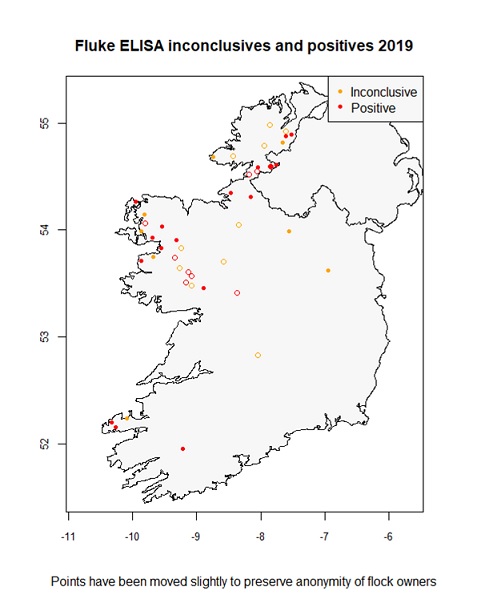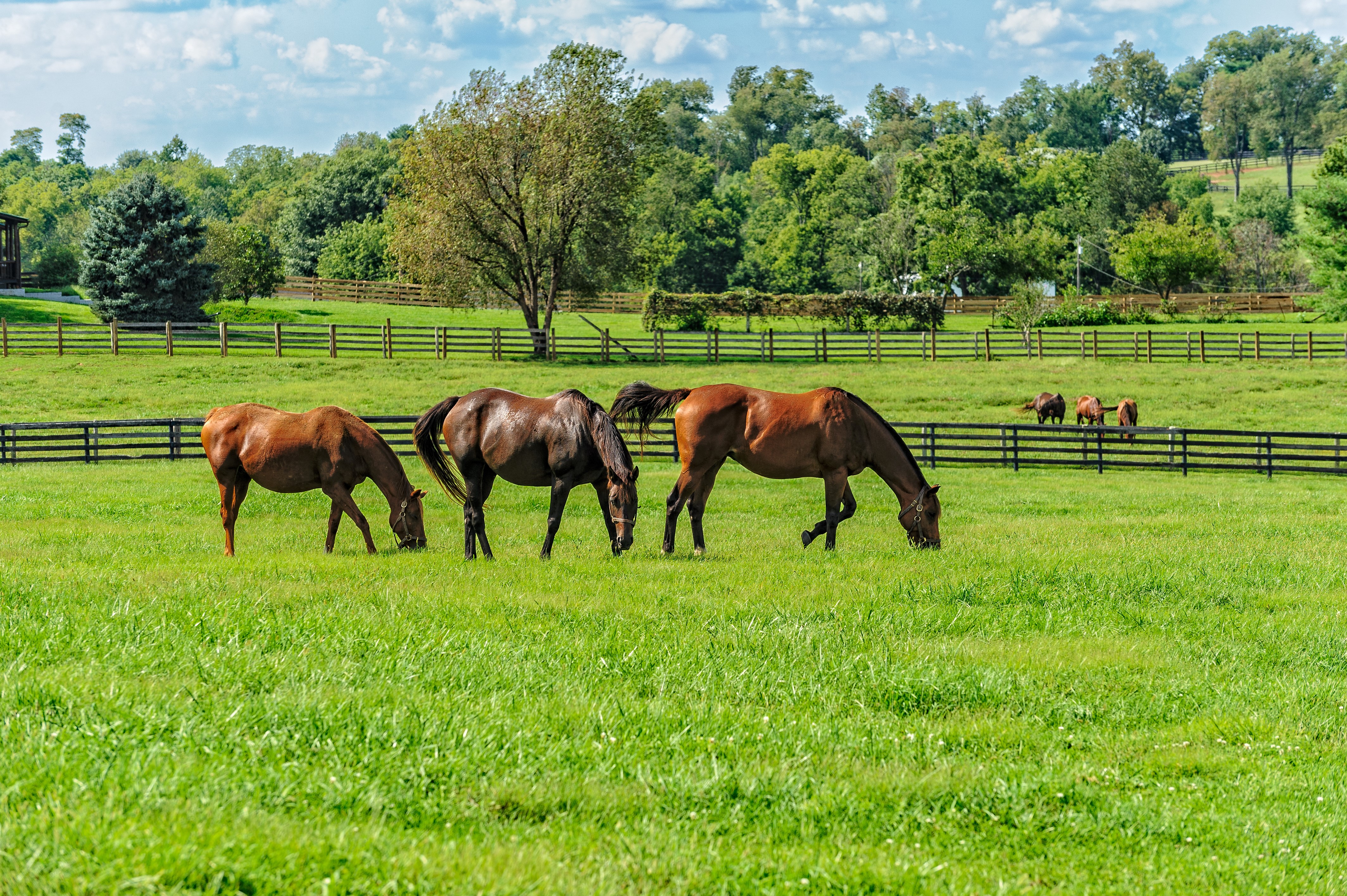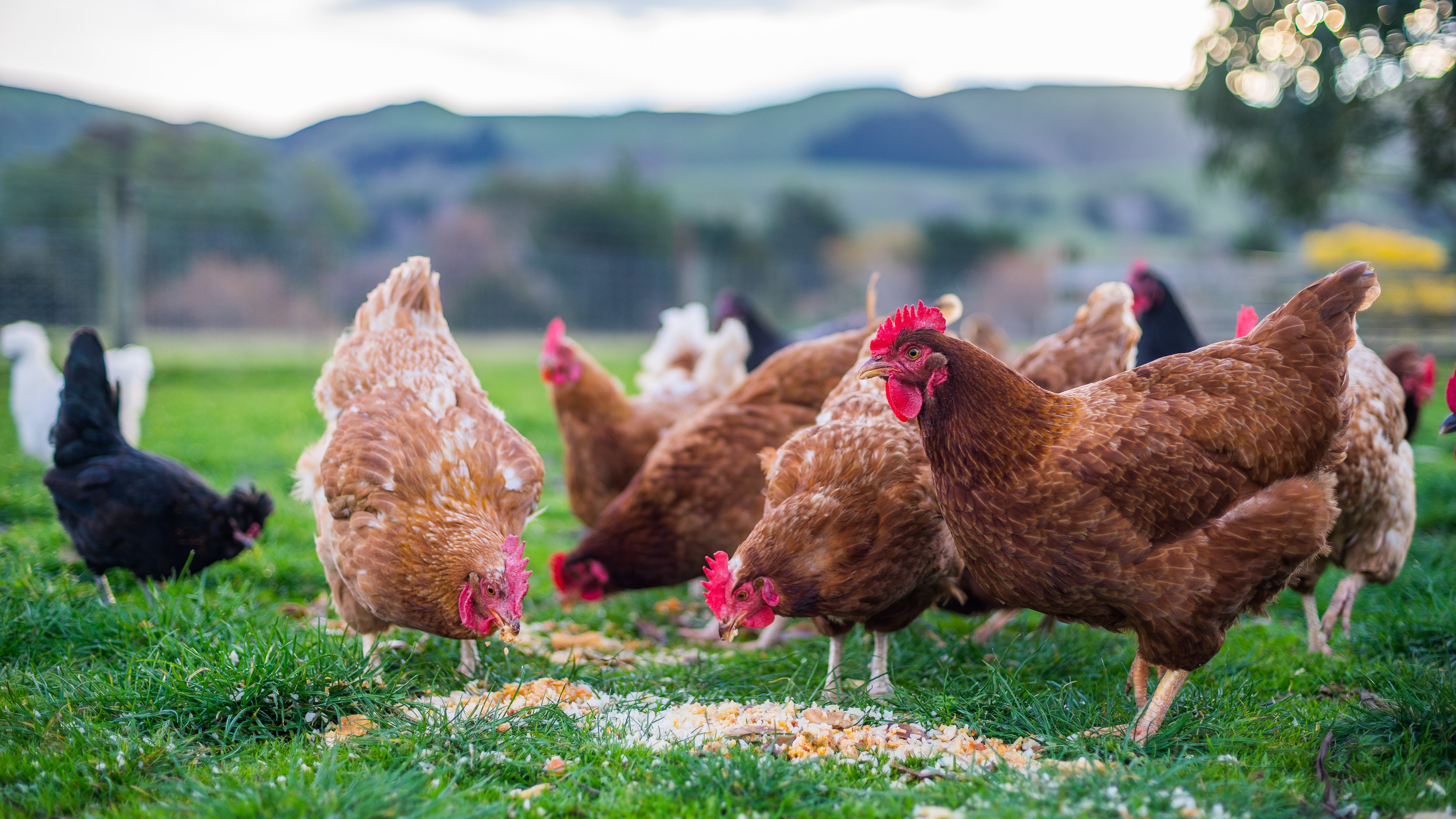Lamb liver fluke antibody test results - Sept
Using abattoir blood samples from slaughtered lambs to detect the timing & spread of fluke infection
Since 2015, from June to December, DAFM has taken lamb blood samples in factories from a proportion of flocks at the time of slaughter. These have been tested for liver fluke antibodies to determine the timing and geographical spread of liver fluke challenge to grazing lambs.
The number of flocks selected for sampling from each county is intended to be proportionate to the sheep population of that county over the entire sampling period (June to November 2019). A number of samples are taken from each selected flock, and these are pooled at laboratory level. The presence of liver fluke antibodies reflects the level of challenge the lambs have experienced during the most recent grazing season. The presence of liver fluke antibodies in 2019 born lambs is therefore a sentinel for exposure to liver fluke in the wider sheep population in the region, as by definition these lambs must have been exposed during the 2019 grazing season.
Results up to and including August 2019
Results for the country, for August and for the year up to and including August 2019, are as follows:

Please see maps in Figure 1 and Figure 2 below for more detail on the distribution of positive and negative results.

Figure 1: Lamb liver fluke ELISA test results for August 2019.

Figure 2: Non-negative lamb liver fluke results for the year up to and including August 2019. August results are represented by closed (filled) points; previous non-negative results are represented by open points.
As was the case in previous months, a number of samples associated with flocks in the North and West tested either inconclusive or positive for antibodies to liver fluke. A notable feature of this month’s results was the non-negative results recorded for flocks in the southwest of the country. Overall the maps suggest a gradual expansion of the area where liver fluke is active as the year goes by. Please see Figures 1 and 2.
As can be seen from Figure 1 above, some parts of the country were represented on the August survey by a relatively small number of flocks. Accordingly, farmers should exercise caution when interpreting the results of the August survey as they relate to local areas. In a minority of cases, where the lambs had been purchased shortly before slaughter, the county associated with a batch will not reflect accurately where the batch of lambs spent its life. This should also be borne in mind when interpreting the results.
Thanks to Seamus Fagan of Athlone Regional Veterinary Laboratory, Charlie O’Connell of VPHIS and Kate O’Keeffe, DAFM blood testing laboratory in Cork for the information provided.






